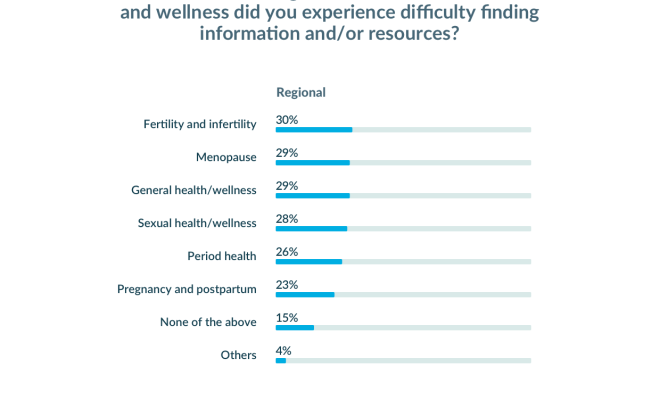
Health x Wellness
Women are turning to femtech for answers
Milieu Insight finds that women are facing difficulty in finding information and resources related to female health and wellness, and how femtech can step in to help.
A recent Milieu Insight study on femtech found that 85 percent of Southeast Asian women faced difficulty finding information and resources related to female health and wellness. Some of the most common areas where these challenges occur are in fertility and infertility (30 percent) and menopause (29 percent).
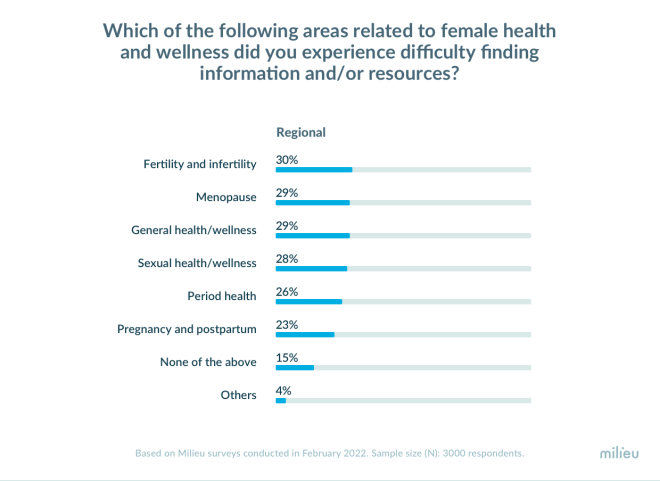
The study shared that it can be difficult for women to start or navigate for answers when prior education to female health is still very much limited. One of the most common reasons for facing difficulty finding information is ‘I don’t know what kinds of resources/information I should be looking for’ (42 percent), and ‘Not sure about credibility of the resources I found’ (40 percent).
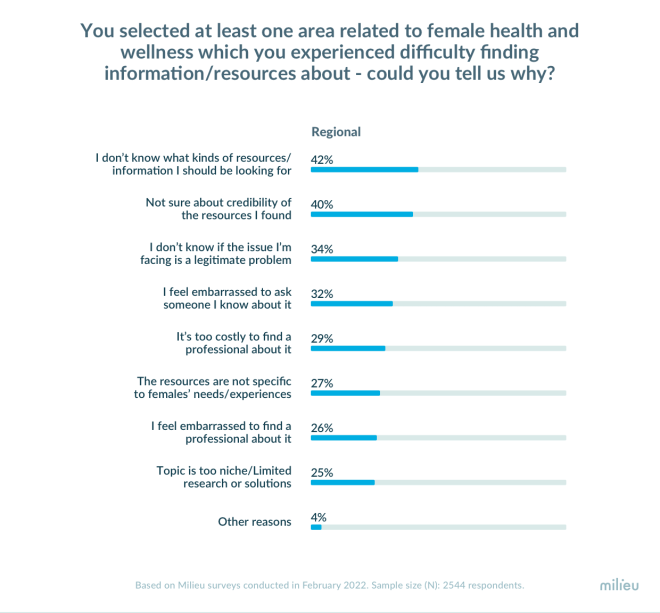
Singapore as ASEAN femtech hub
According to Milieu Insight, Femtech refers to a range of health software and tech-enabled products or services that address female medical and health needs, in areas such as period health, sexual wellness, fertility and infertility, pregnancy and postpartum, wellness and menopause.
There were Singapore hosts 24 femtech startups in Singapore, more than half of the share in the ASEAN region (41 in total), as of Q1 2021.
However, the survey found that only 23 percent of Singapore women are using a femtech product or service. From a Southeast Asia perspective, less than 4 in 10 women use femtech.
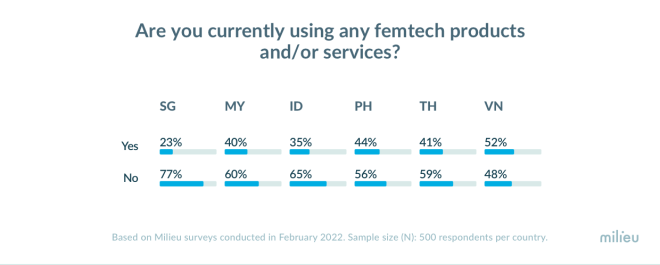
The most common usage for femtech are predominantly for period health (72 percent) and general health/wellness (44 percent).
What can the femtech industry do?
Based on the results, Milieu Insight shares a few suggestions for the femtech industry to consider:
- Guide women towards the right direction: Women face a major hurdle in navigating the resources available due to the lack of sufficient knowledge about the various aspects of female health and wellness. Women face difficulty searching for information because they are unsure of what they should be looking out for, or simply said, “I don’t know what I don’t know”. Femtech companies can help to bridge this knowledge gap in order for their products to reach women effectively.
- Spark open conversations, but respect women’s need for privacy and discretion. While femtech aims to destigmatise, businesses have to be mindful that female consumers may still want to maintain discretion, and this can also vary across cultures. For example, the survey found that 80 percent of Filipino women prefer in-person consultations to get answers to their health issues, while only 46 percent in Thailand had similar preference. Femtech businesses can be mindful of these varying preferences, and respect the need for privacy and discretion in their products or services.
- Period health is the most common purpose for femtech usage, but other areas trail far behind – such gaps can be opportunities for businesses to help women have an all-rounded understanding of their health.
- The survey shows that apps are the most commonly used form of femtech products (59 percent), when compared to other forms such as wearables and telemedicine/teleconsultations. While smartphones and apps are a go-to for most women, app fatigue can be a real problem. Businesses have to be strategic in how they want to weave seamlessly into the lifestyles of their target users.
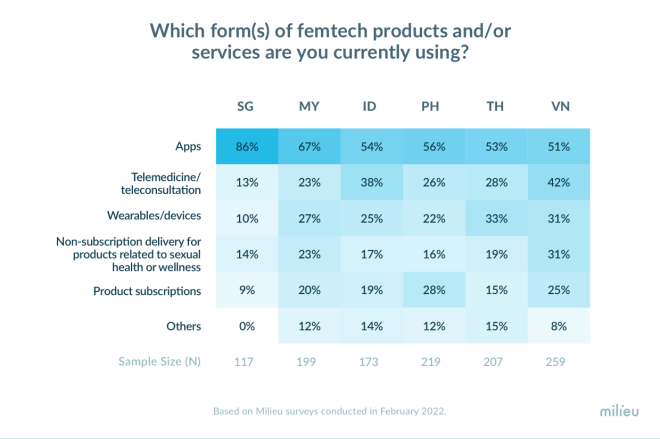
Image credit to Milieu Insight.






